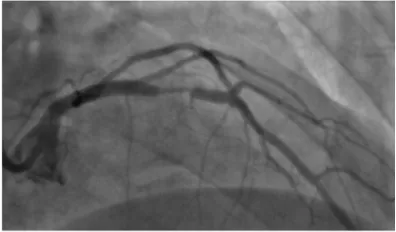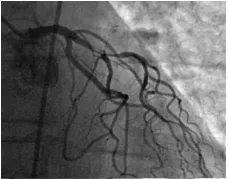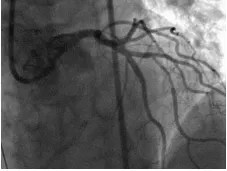What is a Heart Attack?
Today, we know heart attack as an illness with a well-defined cause, course and potential treatment. Before modern medicine, the understanding was quite different.
In medical school, I asked one of my instructors what a heart attack was. He told me it was a fit of chest discomfort that left you sick for months, if you survived. In error, I took this as a dismissal, something along the lines of, “Go away kid. You bother me.” The truth was that he had simply restated an original understanding of the illness. Before the tools of modern medicine peaked inside of the body, all that was known of any illness was the type of discomfort that it caused, how you might have picked it up (liberal eating habits or being around other sick people) and what came with it, like fever, rash or cough. Before it was called heart attack, these events were a day or so of ill-defined chest discomfort followed by profound illness whose cause was unknown.
The first glimmer of an illness
Chest discomfort was long recognized as a sign of danger but only as a part of other illnesses.
Physicians of the ancient world made mention of chest discomfort as a potentially threatening complaint, but not in great detail. Infections, starvation/malnutrition, and injury were the dominant threats to wellbeing. Physicians were busy with hygiene and good nutrition. Some chest discomfort that was troubling mostly older, fatter people failed to garner much interest. By the 18th Century, the problem had grown and a physician named Heberden felt it should be recognized. He saw a pattern in the type of discomfort, who was affected and the severe illness that came with it. In a description, provided so that all physicians could recognize the warning, Heberden gave this illness a name, Angina pectoris. The name described, not pain, but a strangling or anguish inside of the chest. He had no idea what caused this discomfort, only that the illness was disabling and sometimes fatal.
Angina pectoris
Angina may be just a little different for everyone
The most common description is a burning, boring or pressure-like discomfort, usually felt in the center of the chest.
Angina is a symptom. It is a sensation that the body uses to send a warning of trouble within.
Many heart attack survivors look back on events and realize that they missed warning signs of what was to come because they thought that something so dangerous would hurt more. Although some survivors do report having felt pain, just as many people take pains to emphasize that what they felt was uncomfortable rather than painful.
Early on, discomfort is usually brought on by emotional stress or exercise and may also be felt in the upper back, neck, arms or jaw. With discomfort, many people notice shortness of breath, nausea, sweating and an anxiety that compels stillness or cessation of any offending activity.
Fatigue and Shortness of breath
Most disease of the heart is not truly felt by the heart. Rather, the heart’s impaired performance is made known through general sensations of fatigue or hunger for air. Fatigue in particular may be long-standing before angina appears or any disease of the heart is actually discovered.
Relief
Angina is relieved by rest or nitroglycerin, with typical episodes resolving slowly, over 1-30 minutes.
ATTACK
Once angina has appeared, its threat looms. Exceed the boundary placed on physical activity, fear, anger or worry and angina will return. Symptoms might occur even earlier after a meal or in cold wind. Meanwhile, symptoms resolve slowly after ceasing the offending activity. The propensity for angina to pounce at any offense and recede slowly in a lingering reminder of its inevitable return made many people refer to symptoms as “attacks”.
The cause of angina: the heart
Angina is the language that heart muscle uses to communicate with the brain. It sends a warning, but the warning lacks clarity. When the hand hurts, the mind knows of the hand. When the heart hurts, the mind knows only that something is wrong, not what. The sensation arises when heart muscle has to use more energy than it is given. Therefore, angina may arise from an overworked heart. However, the most common cause is decay of the arteries that deliver blood/energy to the heart. The decay is called atherosclerosis or coronary artery disease.

Angiogram of a diseased coronary artery
Heart Attack
Atherosclerosis is unpredictable. The disease may worsen suddenly. If so, angina appears without provocation. No exercise. No worries. Just angina. The sensation may also be more intense or last longer than the typical 1-30 minutes. These attacks of angina stand out because they are a change. New onset symptoms, a changing pattern, or intensity is often a sign of imminent danger. Even if a severe bout of discomfort resolves, fortunate survivors might be left with crippling fatigue or difficulty breathing. Historically, these most severe attacks of angina merited the singular designation of “A Heart Attack”. We still know them as such, but understand the cause much better.
What happens?
Diseased arteries may cause blood to clot at any time. Clots are unpredictable and can grow or change quickly. As the clot grows larger, there is less room for blood to pass to heart muscle. The result is new onset or changing symptoms. If the artery closes, damage to heart muscle–a heart attack–occurs.
How can I tell?
Risk Factors for Heart Attack
- Age
- Smoking
- Diabetes
- Obesity
- High blood pressure
- High Cholesterol
- Chronic Kidney
- Disease
- HIV infection
Angina is known by the company that it keeps.
The heart is not the only source of dull discomfort in the chest. However, the heart should be assumed to be the source of unexplained symptoms in anyone who also has risk factors for developing disease of the arteries. The most important risk factor is age. The most dangerous are smoking and diabetes mellitus. An example of how risk factors are used follows. In a 20-year-old woman who complains of chest discomfort after eating a hot dog covered in mustard, the absence of any risk factor and her culinary tastes point to acid reflux as the likely 11 source of her symptoms. Were she 45 years of age, with a cigarette habit or troubled by high blood pressure the same sensation is not so easily dismissed, even if the hot dog and mustard are still part of the story.
What to do
Should you recognize discomfort that might be angina, discussion with your doctor or healthcare provider is urgent. A dispassionate observer can better evaluate the meaning of symptoms and context to decide if more investigation or treatment is needed. New or progressive symptoms may be a warning of trouble to come. Modern medicine offers a rescue from trouble, if it is caught in time.
Call for Help.
When faced with a persistent discomfort that you are concerned may be coming from your heart, the most important first step is to ask for help. Tell someone nearby, contact a professional or call 911.
What I offer
Rescue
Evaluate new or changing symptoms to identify warning signs for heart attack and stop the process.
INTERVIEW/EXAM/EKG HOSPITAL CARE TESTING
Echo/Stress/CT Testing through hospital based laboratories.
Heart Catheterization, when necessary, to visualize the coronary arteries: mostly done through the wrist.
TREATMENT
Address the problem artery with medicines and other treatments if needed.

An artery caused symptoms that were threatening.

The same artery after repair
Preparation
Improving overall health to enjoy life and withstand future challenges from heart attack or other illnesses.
Exercise
Maintaining fitness helps face any health challenge
Medicine
Provides relief from symptoms and protection for the future
Repair
Angioplasty or surgery to relieve the most severe symptoms or life threatening disease
Prevention
Address the underlying causes of arterial disease to avoid heart attack and stroke.
Lifestyle
Diet and exercise habits are the core focus of reducing risk. Most important are smoking cessation and controlling body composition
Medicine
Diabetes, high cholesterol and high blood pressure are, metabolic and functional derangements that affect arteries. Where control with diet and lifestyle alone is not possible, medicines such as aspirin and those for cholesterol lowering, glucose and blood pressure control can be invaluable.



